One of the things that 2D artists have over 3D artists is their control of light. Brilliant sunlight, muted shadows, reflected light, moonlight, whatever they want is whatever they get. A 3D artist’s work is at the mercy of its environment. Gallery light is different from day light, is different from direct light, is different from reflected light is different when a piece of sculpture, on the mantle, is seen under canister light in the ceiling. And the character of the piece changes with every variant of lighting conditions.
I’d been thinking, for awhile, about how to exercise a little control over the way one my pieces was lit. I also wanted to explore creating a female character different from any I’d done before. A strong, generously portioned woman who could take care of herself. Those two things were the impetus for SHE.
It’s no accident that she has some similarities to a Norman Lindsay woman.
I started with a clay rough, working out the design and attitude of the character. This stance happened, as with most things in my creative life, by accident. I’ve said it too often probably, but clay can be a great collaborator. Pushing it around, pinching it, pressing it into itself, raking it away. Under real light in real space it reveals things to you about the piece and its evolution I don’t think is possible in any other way.
The first pass had her up on her toes.
The second pass had her right foot firmly planted with her left foot, on her toes, ready to advance if needs be
With the clay rough done, I made a waste mold, poured a wax and began finish work. This is all tool work, deciding how much detail will inform the piece and how various shapes will play with and against each other. For a short while I had considered keeping her fully naked. But then the issue of focus moved me to dress her in a loin cloth.
More wax work, adding her other leg to make sure she was balanced. The other benefit of working a piece physically is being able to see if she can stand up on her own. Is her center of gravity right? If she falls over, it ain’t. If she don’t, she’s where she should be.
Creating a portrait is one of the hardest things a sculptor has to consider. The face is the first place we go and tells us more about the character of the person than anything else. I wanted her to have a undetermined ethnic look, with a strong, confident expression and a sublime sexiness.
Working her right arm first told me how I was going to work the musculature of both arms.
All the tool work to the wax was completed at this stage. I needed to cut her right arm at the bicep to facilitate casting, so added a bicep bracelet. Her left hand would need to be cast separately as well. The main casting gate was positioned at the top of her head with venting gates at her shoulders, at the cuff of her arm guard and the bottom of her truncated right arm to her hip. The knife was a separate cast as was her spear.
The best way I’ve found to get a good part-to-part fit is by working wax to cast resin. I finished her right arm and bicep bracelet, made a master mold and cast a resin. By giving the resin a light coat of mold release I can work the wax right up against the resin part giving me a seamless, tight fit. This is the stage when I do the final finish work. Using a piece of triangulated paper town and pure gum turpentine, I can buff out all the tools marks. In the final version I substituted leather straps for the coins on her loin cloth.
I can’t imagine doing this tree any other way but working through it in clay. There was so much to consider; making sure I got the light positioned right and high enough over her to create leaf pattern shadows. Creating a design that would enclose her, add movement and give the impression she was standing on a elevated platform.
One of the more daunting challenges was how I was going to cast it and wire it. I don’t have a pressure pot that would accommodate its height, so it would have to be cut into three main sections. Casting the wiring directly into the resin gave me no options if there was an issue internally with a malfunction. This took a little time to figure out. In the end I cast in aquarium tubing that had been coated with mold release. When each piece was cast, I could slide out the tube and I had tunnel within which I could snake the wire. I did this for all three sections which allowed me to position the wire after I’d assembled the body of the tree. All together, the tree and its branches were made up of thirty-nine parts. With the tree nearly compete, I did a lighting test.
This is the first fully cast and cleaned resin ready for paint.
There was no way I was going to make a waste mold and take the tree to wax, so, I brushed it down with turpentine to smooth out as many tools marks as I could and gave it several coats of primer and a final coat of mold release to prevent the primer from bonding to the silicone mold.
With the tree assembled, both SHE and the tree primed, I did one last lighting test.
I made the choice, early on, to stylize the leaf patterns. I created about a dozen basic patterns, cast them in a semi-transparent resin and positioned them on the tree, drilling into the branches for placement. When each leaf section was in place I numbered its position on the tree and arranged it on a piece of foam core with its corresponding number. This meant that I’d have to paint the tree with the leaves glued into place.
The final lighting test with the leaf sections in place. I tried repeatedly to get rid of that hot spot, but there was really nothing I could at this stage other than make the aperture smaller with the addition of a little epoxy putty.
I needed a skin tone that would indicate a kind of Middle Eastern/African ethnicity. To play against her skin tone I gave her deep red hair and brilliant green eyes. I use cel vinyl for all my paint applications, in part because it flows nicely without build up and it goes on perfectly flat.
She was given a full coat of Testor’s lusterless flat varnish to seal the paint and protect it from finger prints and the like. Then varnishes were applied; gloss to her eyes and lips. Semi-gloss to her hair, loin cloth and straps, and a mixture of semi-gloss and matte to her hands.
Next time… The completed SHE, she became.


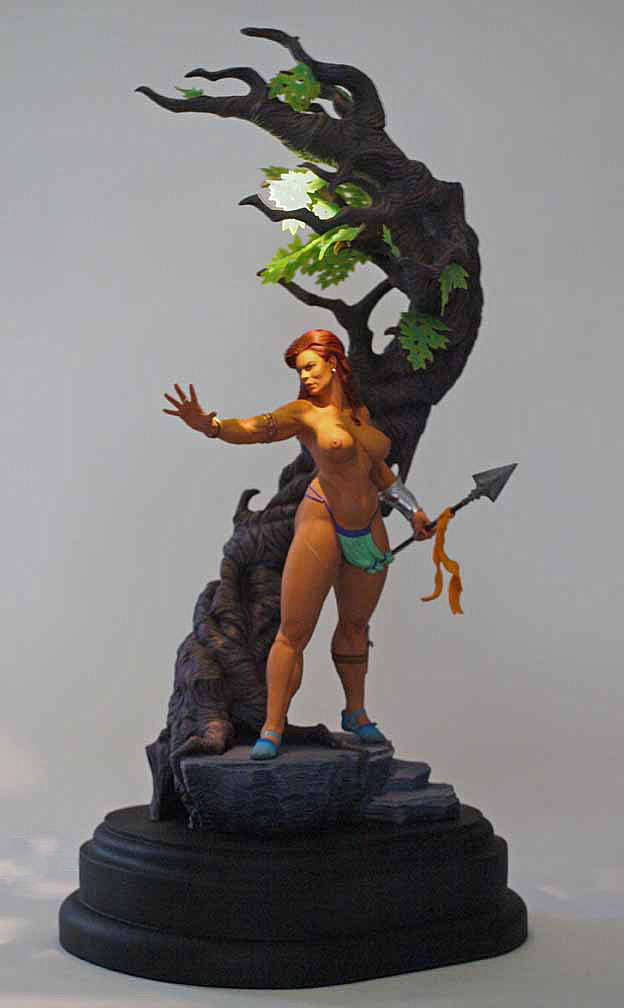





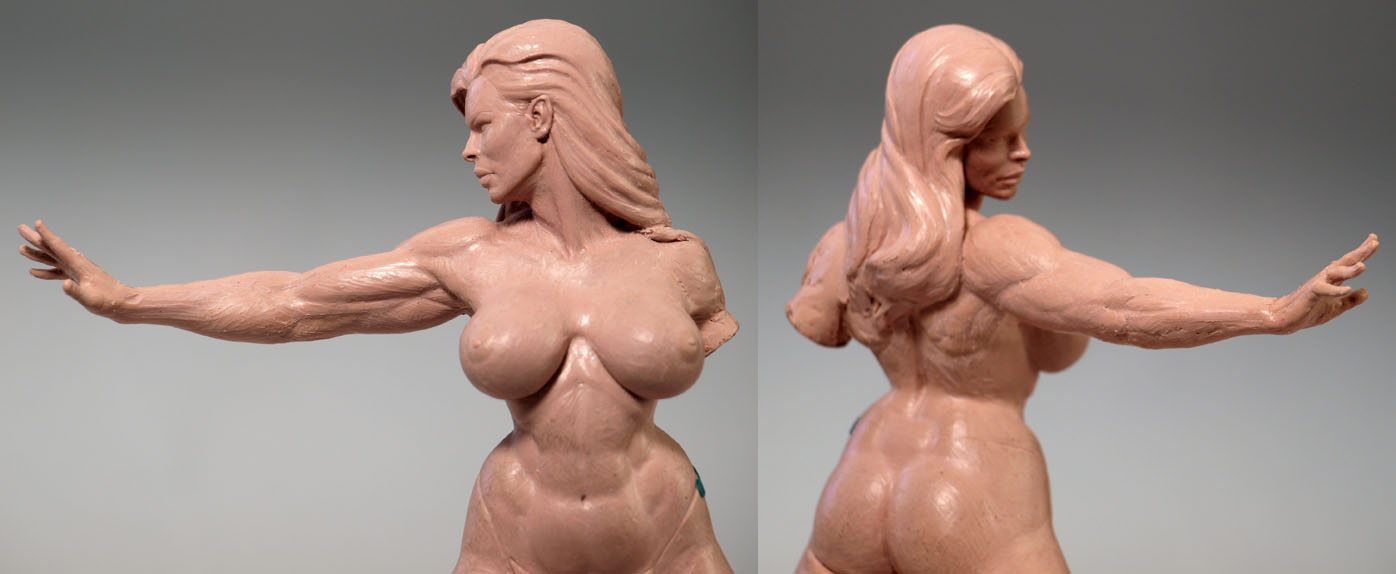
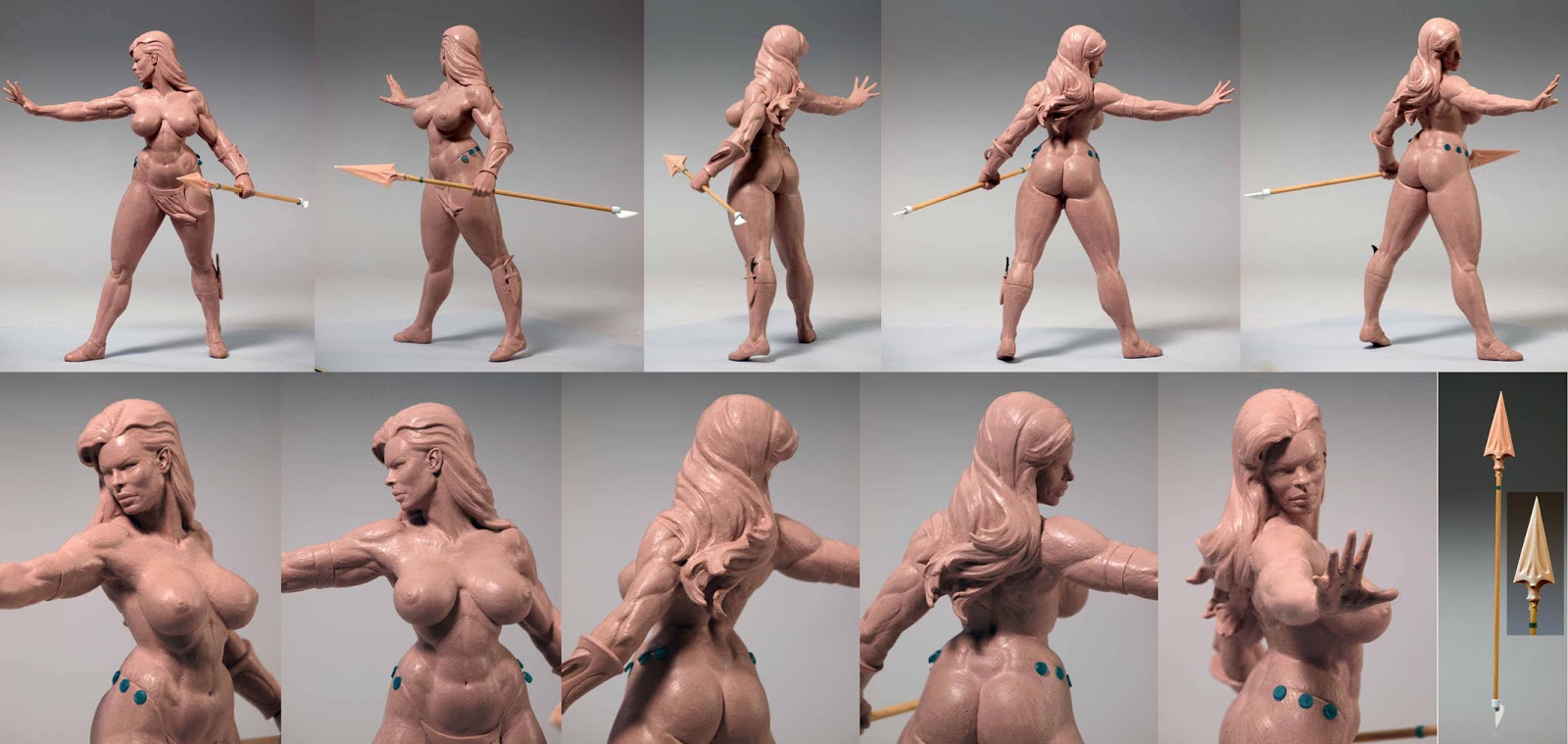



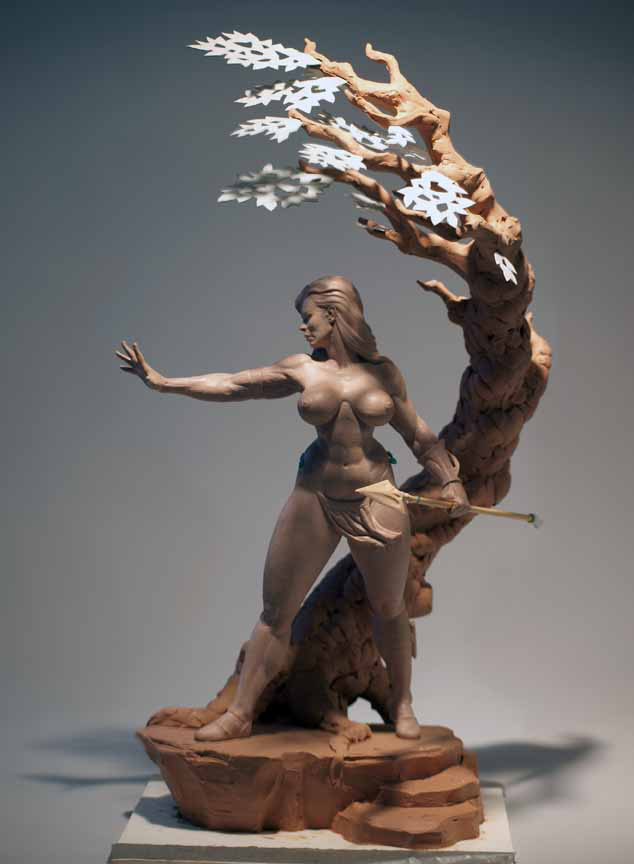
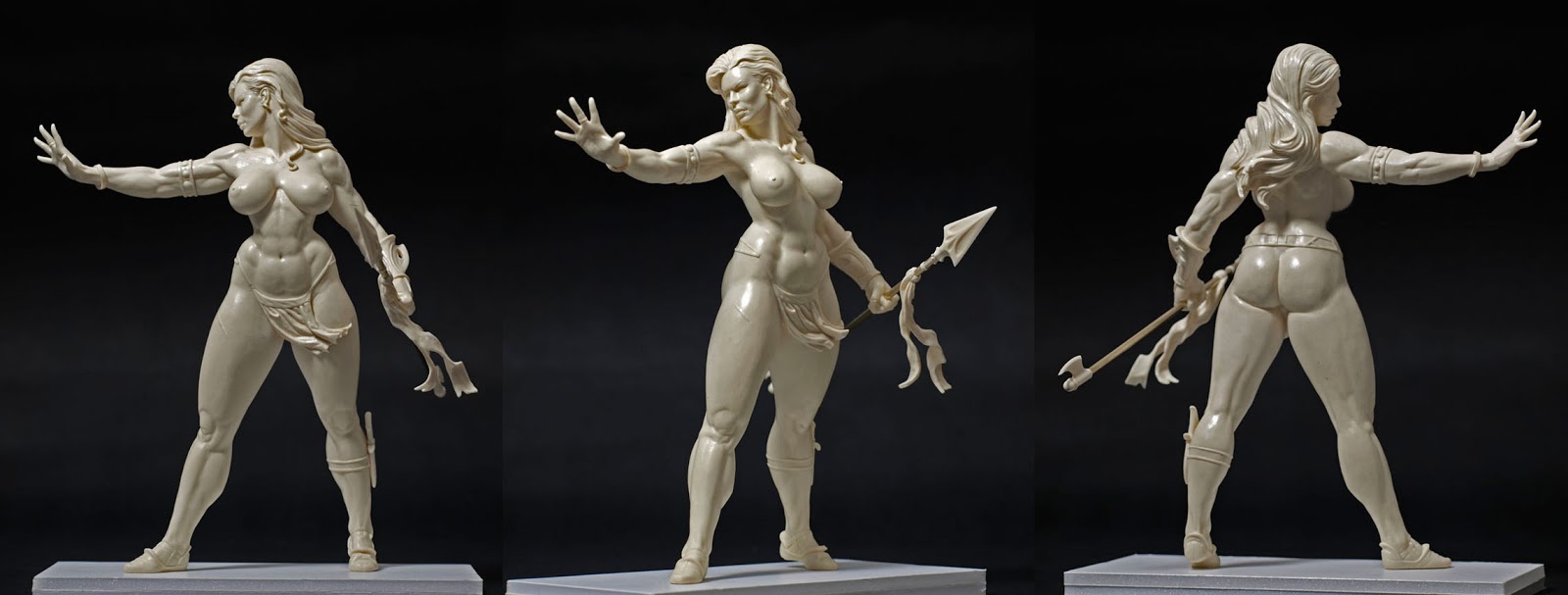
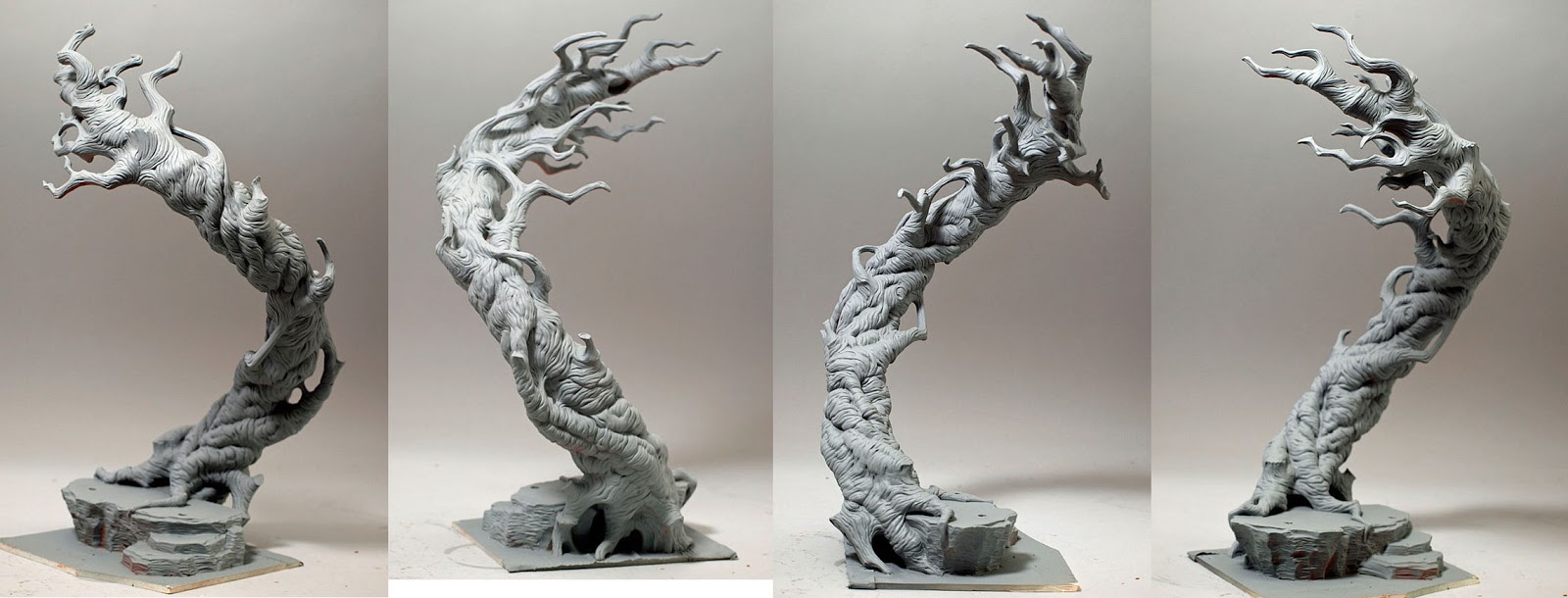
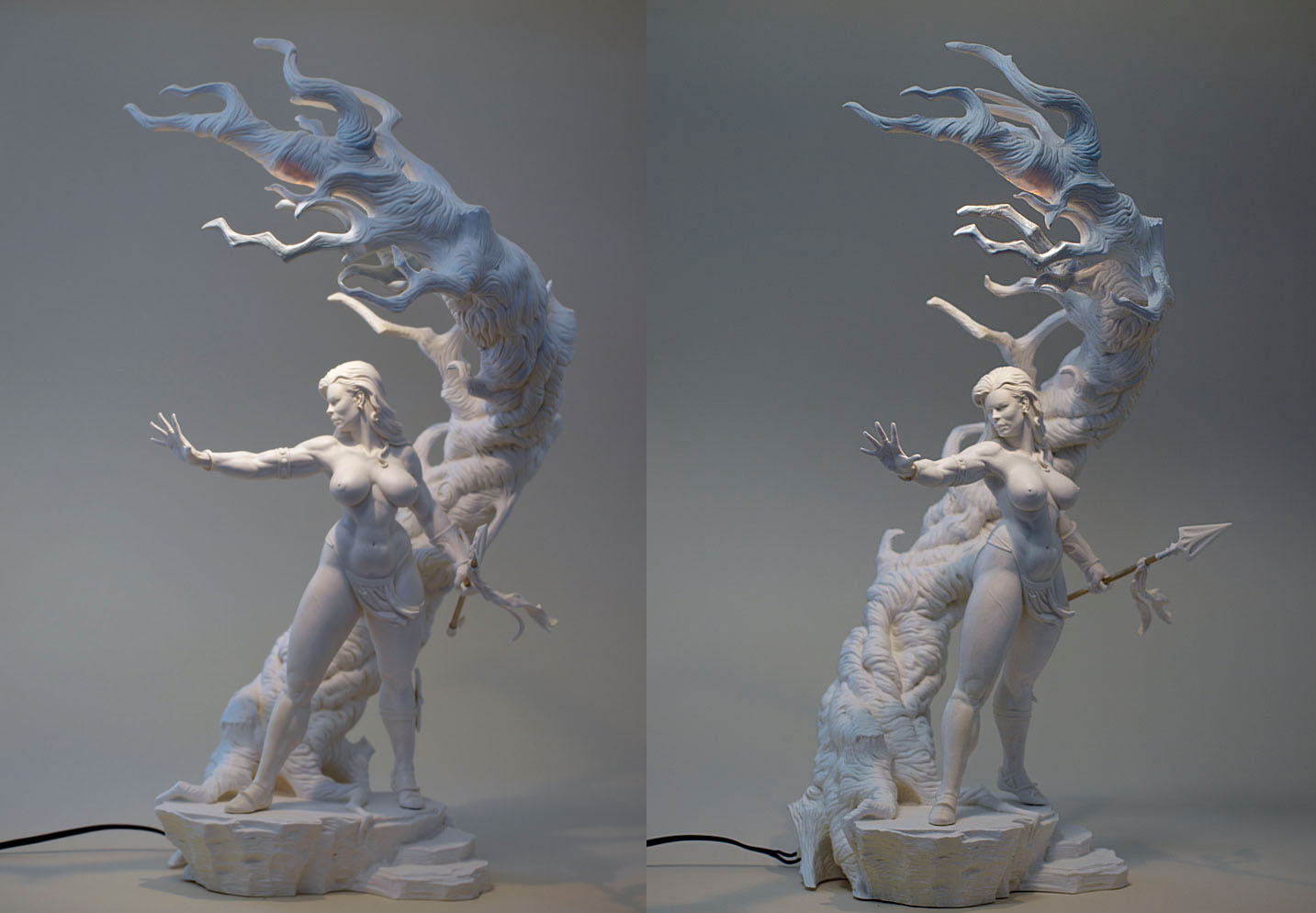
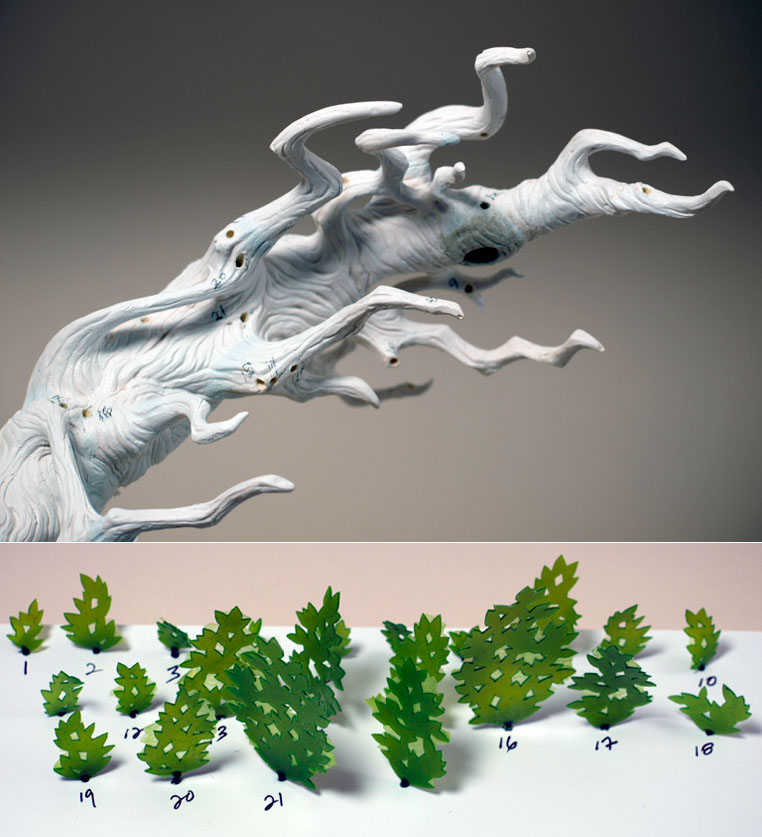
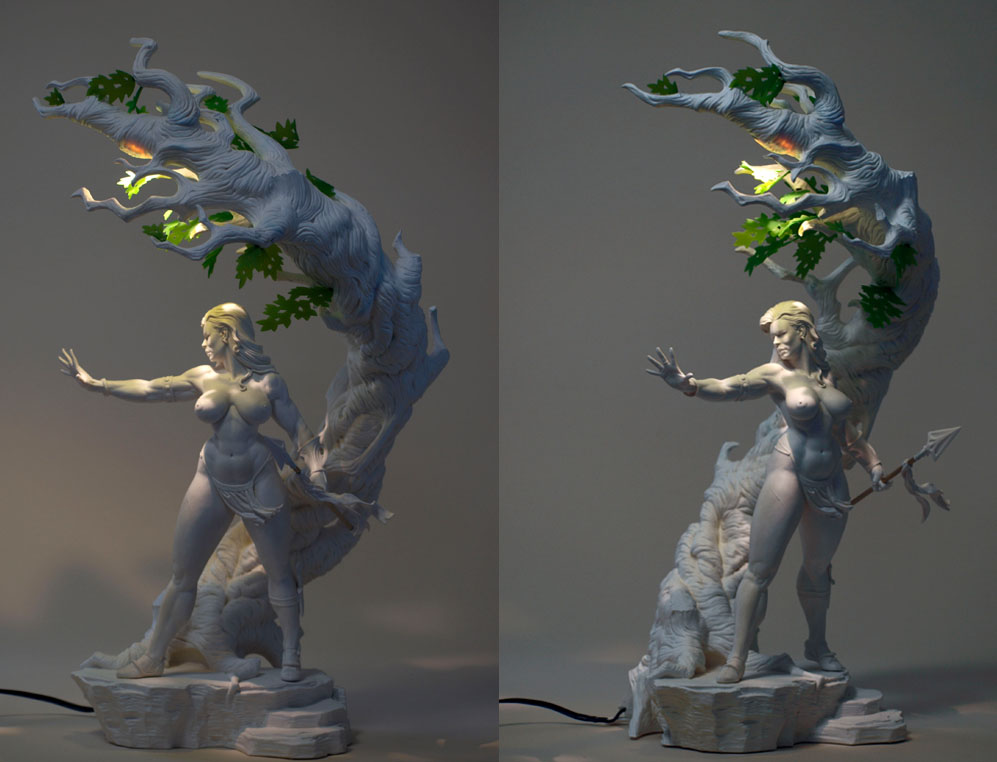
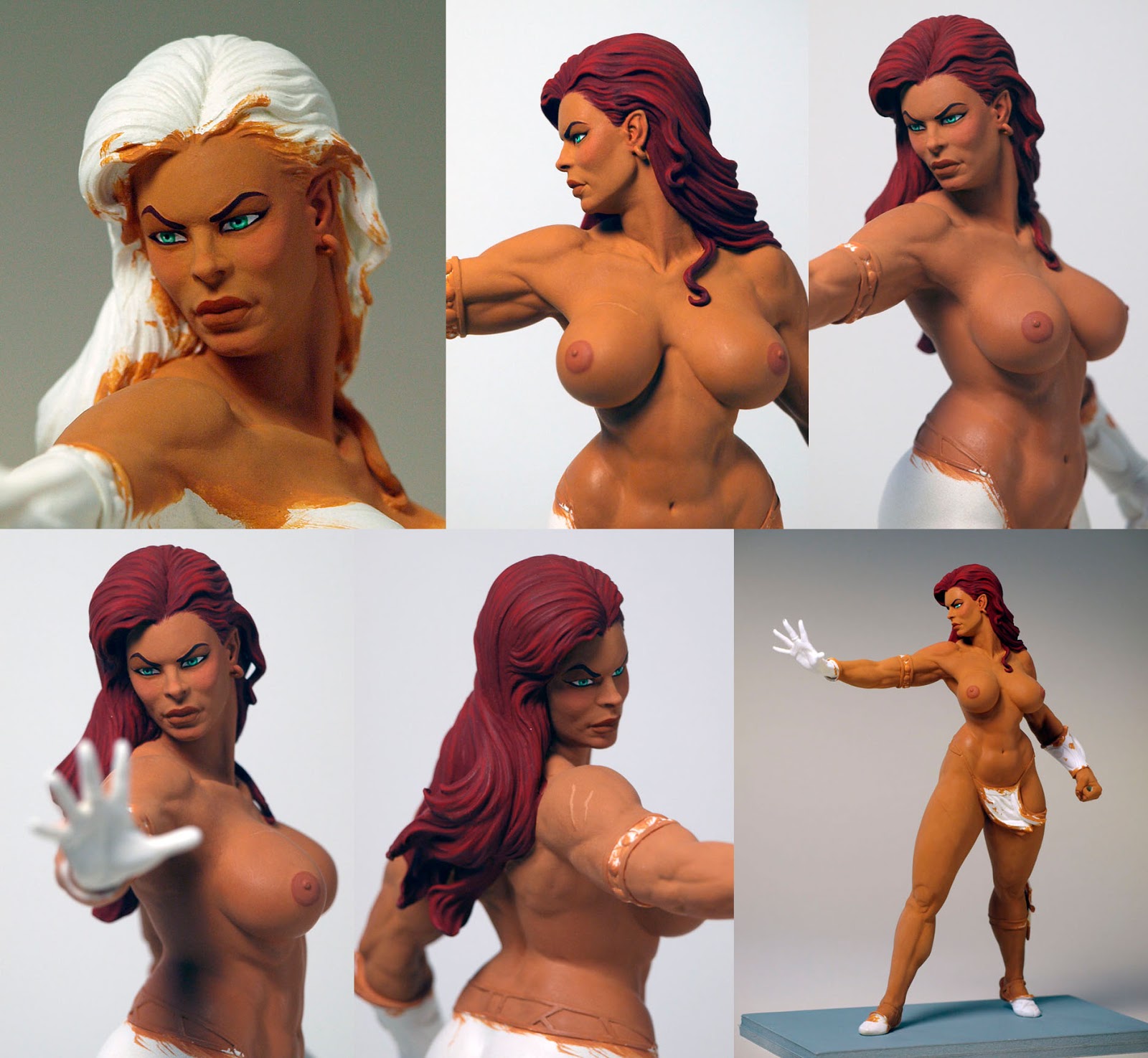
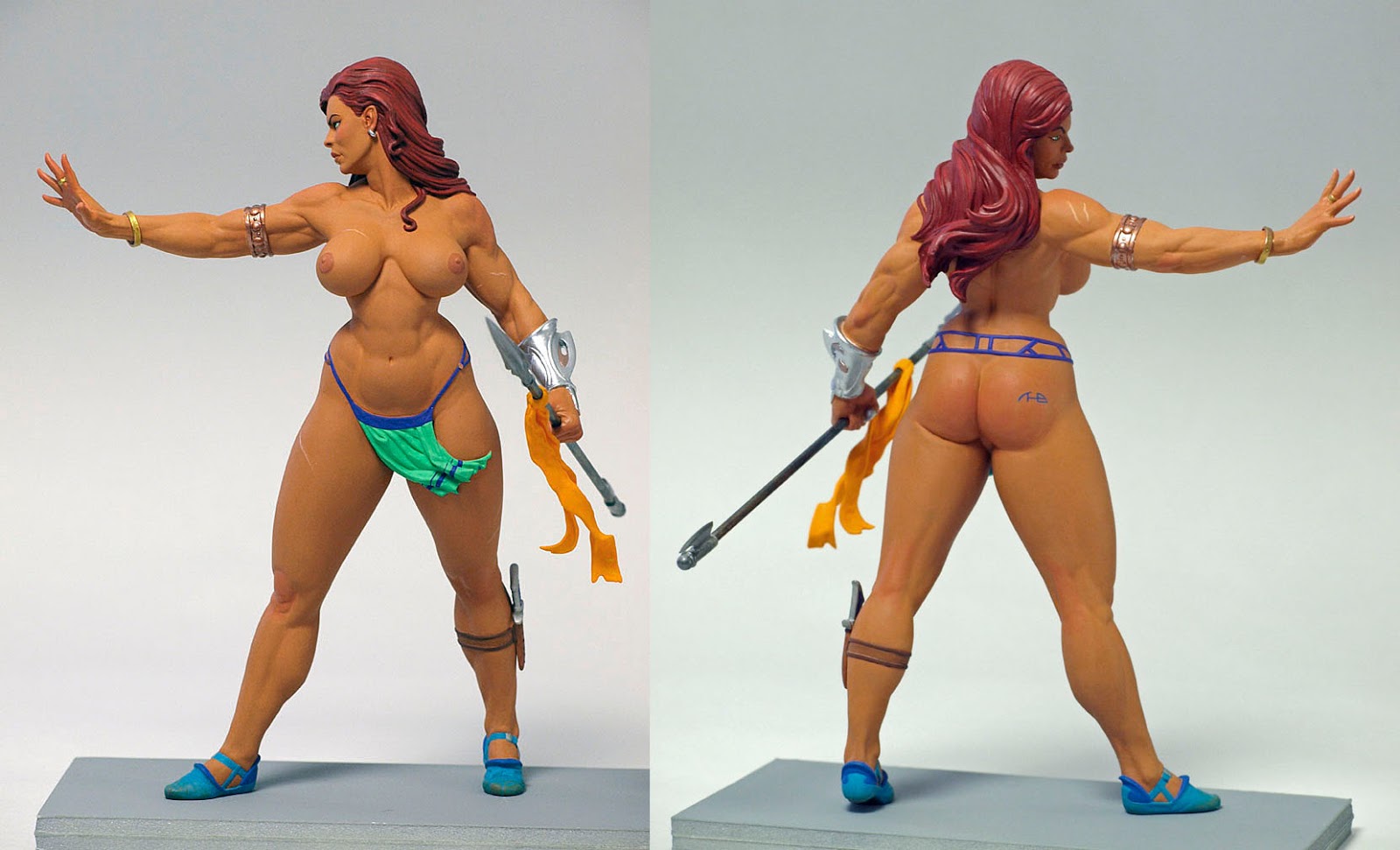

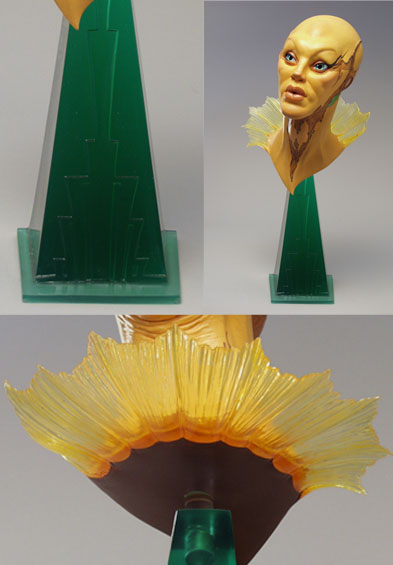
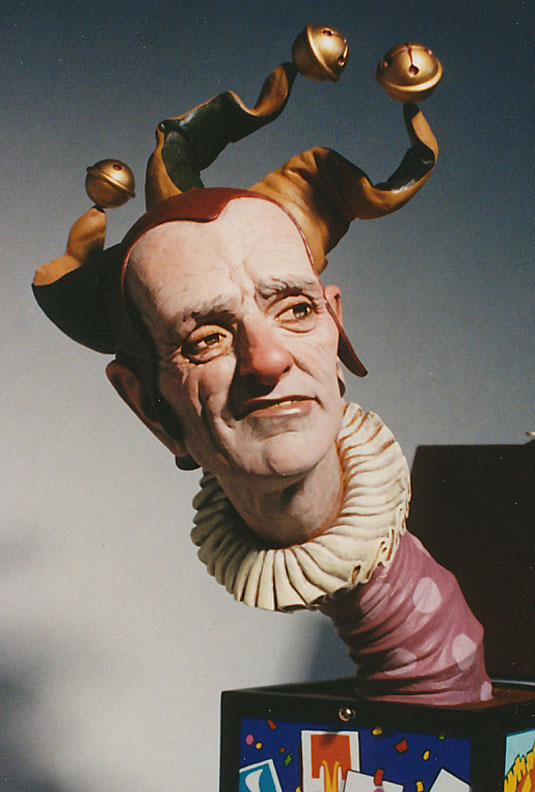
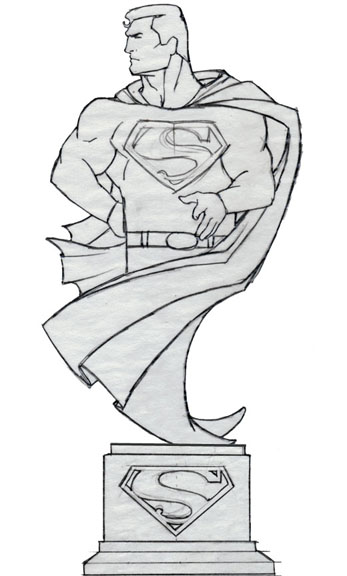
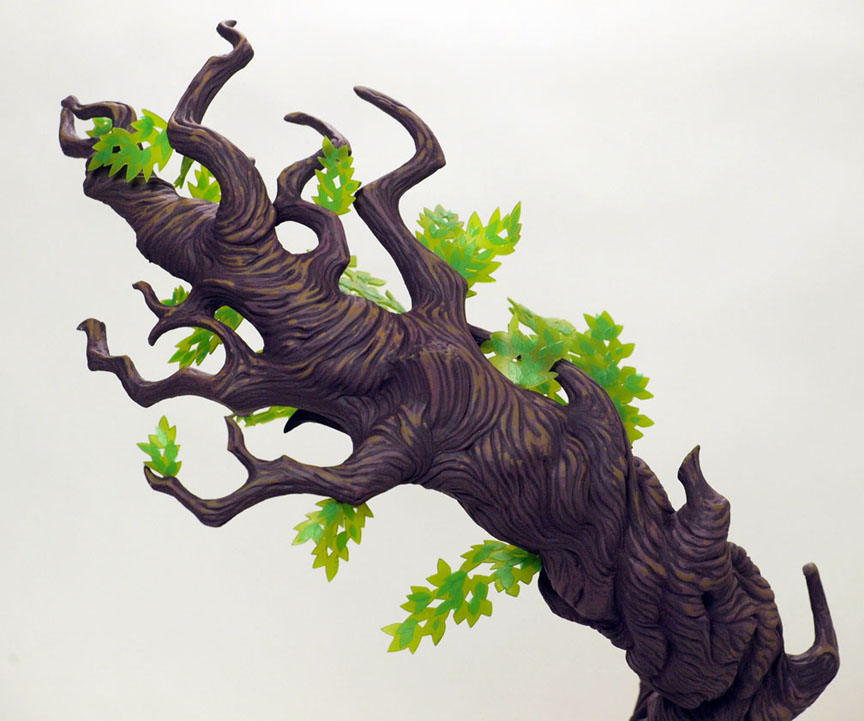

Holy -! Tim, this is awesome! The sculpt and composition are great, but with the lighted diorama it becomes like a 3-d illustration (if that sounds right). The way the light activates the figure is just incredible.
Thanks for sharing Tim. Interestingly, the first thing I noticed was the (relatively) realistic proportions of the figure.
Buxom to an exaggerated degree, yet surely better by far than most common female fantasy figure proportions. Brilliant!
Sadly my very educated and ethically trained wife (of just two days now) strongly disagreed 🙁
Just shows, I guess, how my judgement in these matters still has a long way to go!
Gender ethics aside, I think it's excellently done and, as I've got to make a fairly detailed bonsai style tree soon for my own art. I'd love to hear more about how you crated the tree and tooled it's bark.
Thanks!
One of the most amazing pieces of sculpture I've seen in a long time. Putting her right foot firmly planted on the ground was an excellent choice, and the amount of lift, and it's subtle effect on the rest of her body, on her left foot is perfect. The figure as a whole is palpably charged with energy; powerful.
WOW that is Amazing, just screams Frazetta. If the ass didn't look so manly It would be 10/10!